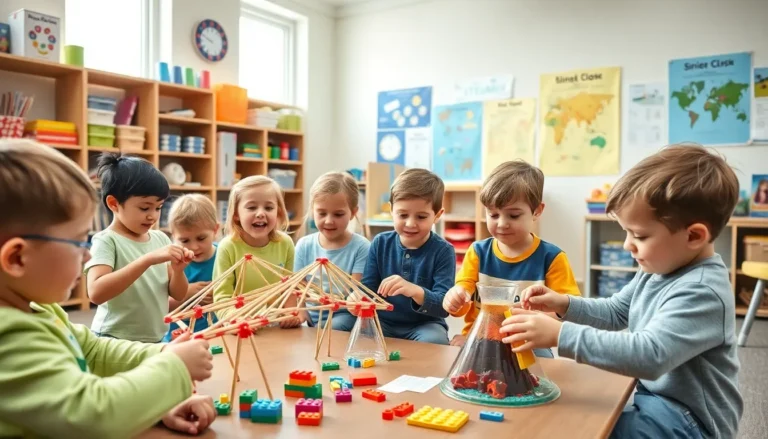Table of Contents
ToggleNavigating the world of child care options can feel like trying to solve a Rubik’s Cube blindfolded. With terms like fostering and adoption thrown around, making sense of it all can lead to more confusion than clarity. Fear not. This guide will lay out the key distinctions between fostering and adoption, helping you discern which path might best suit your heart and home. Whether you’re curious about bringing children into your family or just want to impress your friends with your newfound knowledge, you’re in the right place.
What Is Fostering?

Fostering is a temporary arrangement, providing care for children who cannot live with their birth families. Often, these children are placed in fostering situations for reasons like neglect, abuse, or family crisis. But don’t let the temporary label fool you, being a foster parent can create deep, lasting bonds that can impact everyone involved.
Types of Foster Care
There are several types of foster care, each designed to meet the varied needs of children and families:
- Traditional Foster Care: This is the most common type, where children are placed with foster families who provide short-term, temporary care.
- Emergency Foster Care: This occurs when children need immediate placement, typically in crisis situations, often lasting just a few days to a few weeks.
- Respite Care: This offers a brief break for foster parents, giving a child a chance to experience a different environment for a short duration.
- Long-Term Foster Care: Sometimes, foster care can extend for months or even years, particularly if reunification with biological families isn’t possible or safe.
Duration and Goals of Fostering
The primary goal of fostering is reunification with the child’s birth family, whenever feasible. Foster parents act as temporary guardians, providing love and support while caseworkers work on plans to reunite the child with their family. Each case is unique, and the duration can vary from a few days to years, depending on the situation. Fostering serves the dual purpose of fostering stability for children while working towards family reunification.
What Is Adoption?
Adoption is a forever commitment. When someone adopts a child, they become the legal parent, granting them lifelong responsibility for that child’s upbringing and welfare. Adoption can provide children with permanent homes, which is a beautiful and transformative journey for families seeking to grow.
Types of Adoption
Like fostering, adoption encompasses a variety of paths. These include:
- Domestic Adoption: This is when families adopt a child from within their own country, which can be facilitated through agencies, lawyers, or private arrangements.
- International Adoption: Some families choose to adopt from another country, navigating through inter-country legal frameworks and cultural considerations.
- Open Adoption: This allows for ongoing contact between the child and their birth family, potentially facilitating a more well-rounded understanding of their background.
- Closed Adoption: In contrast, closed adoptions keep identities and facts about birth families confidential.
Legal Process and Commitment in Adoption
Adoption involves a legal process that varies by state or country. Typically, this includes extensive background checks, home studies, and sometimes, a waiting period before the finalization. This journey ensures that the child is placed in a stable, loving environment. Once adoption is finalized, it cannot be reversed, solidifying the bond between the parent and child.
Key Differences Between Fostering and Adoption
Understanding the key differences between fostering and adoption can help individuals and families make informed decisions about their parenting journeys.
Emotional and Financial Considerations
Fostering and adoption both carry emotional weights, though they differ in nature. With fostering, parents may feel a mix of joy and sorrow as they witness their foster children’s challenges and potential reunification with biological families. For adoptive parents, the emotional journey often revolves around attachment and bonding, as they welcome a child into their home permanently. Financially, foster parents may receive a stipend to help cover the costs associated with care, while adoptive parents often bear the costs of legal fees and agency fees, which can vary significantly.
Long-Term Impact on Children and Families
The long-term impact of fostering and adoption can be profound, but distinct. Children in foster care may experience instability and uncertainty, depending on the circumstances surrounding their care. Yet, they also gain valuable life skills and coping mechanisms during this time. Conversely, children who are adopted usually benefit from a stable, secure environment that fosters emotional growth and commitment from their adoptive families. Both paths aim to provide children with the love and support they need to thrive, but the outcomes and experiences can differ significantly.






